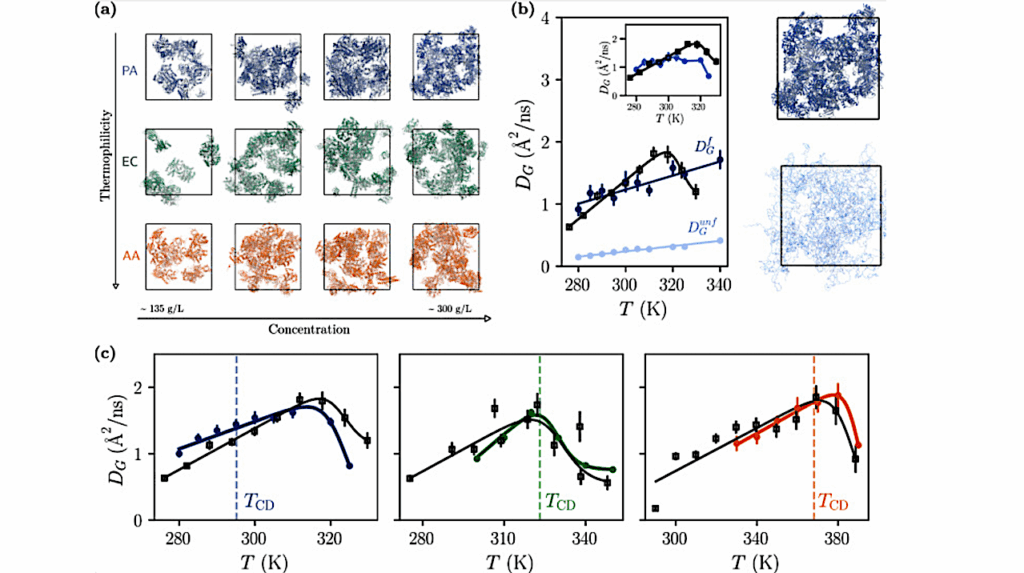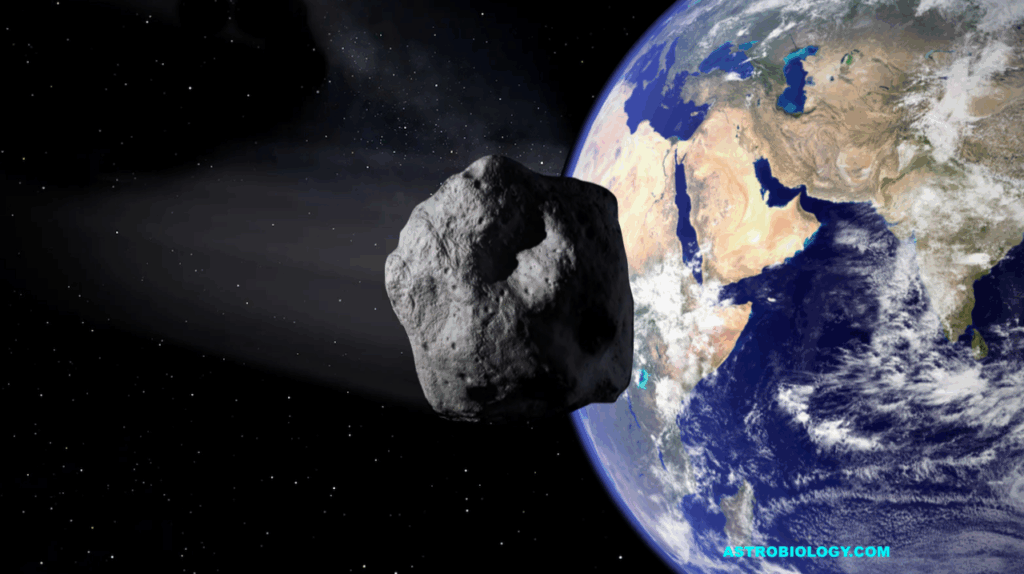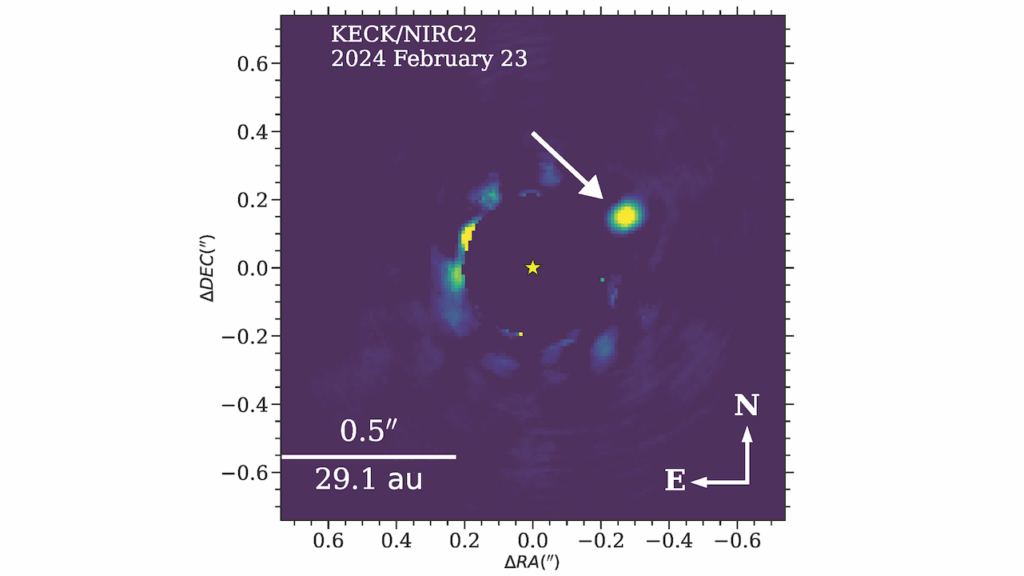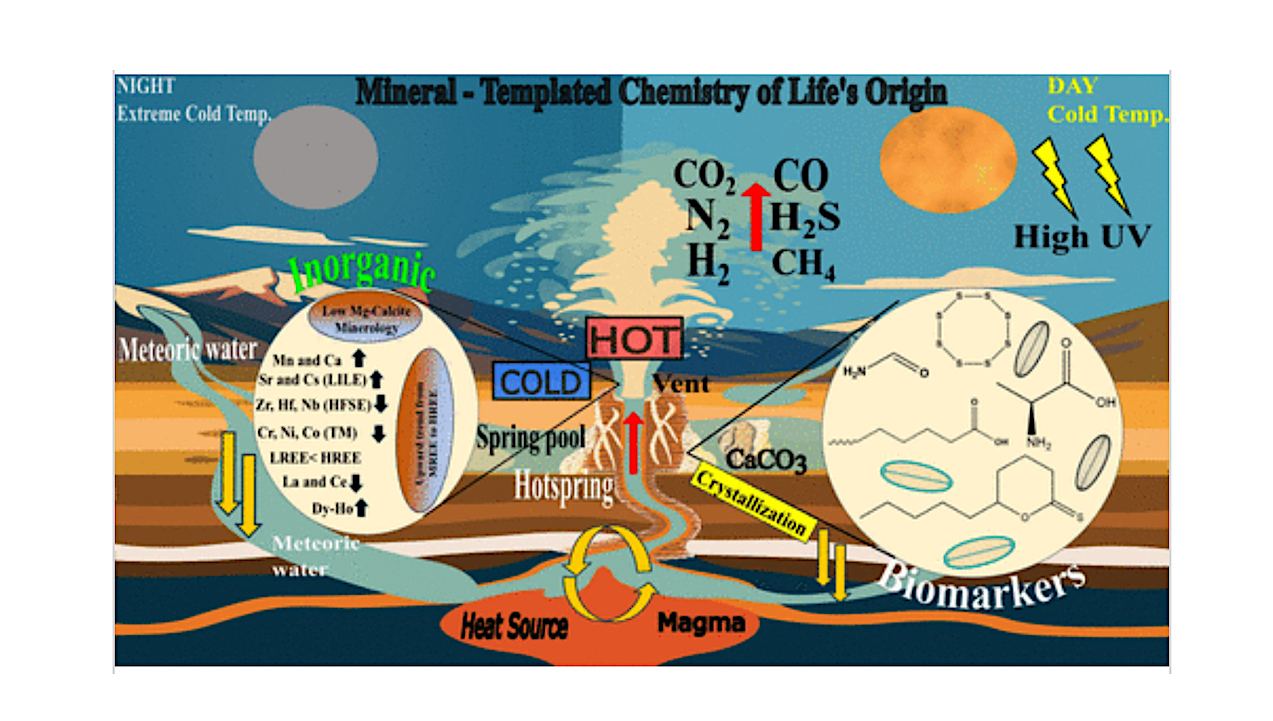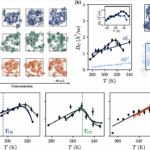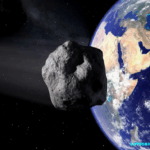Now Reading: HDO Ice Detected Toward An Isolated Low-mass Protostar With JWST
-
01
HDO Ice Detected Toward An Isolated Low-mass Protostar With JWST
HDO Ice Detected Toward An Isolated Low-mass Protostar With JWST
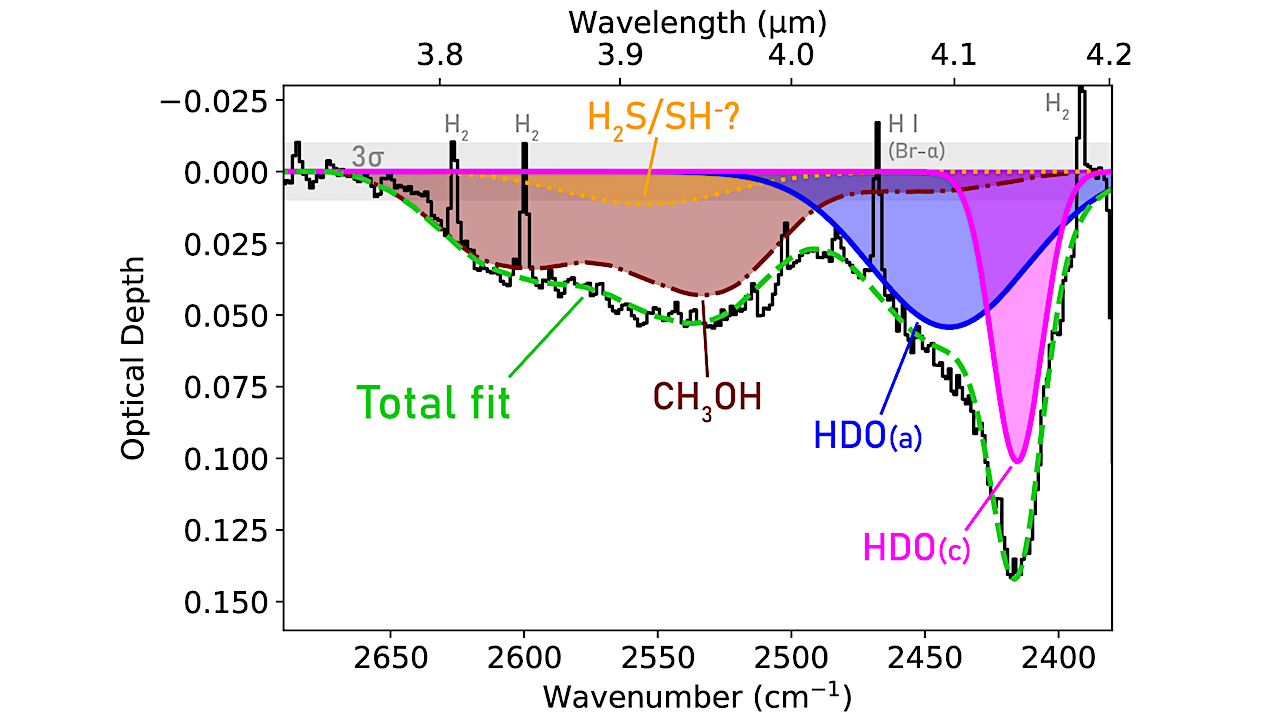
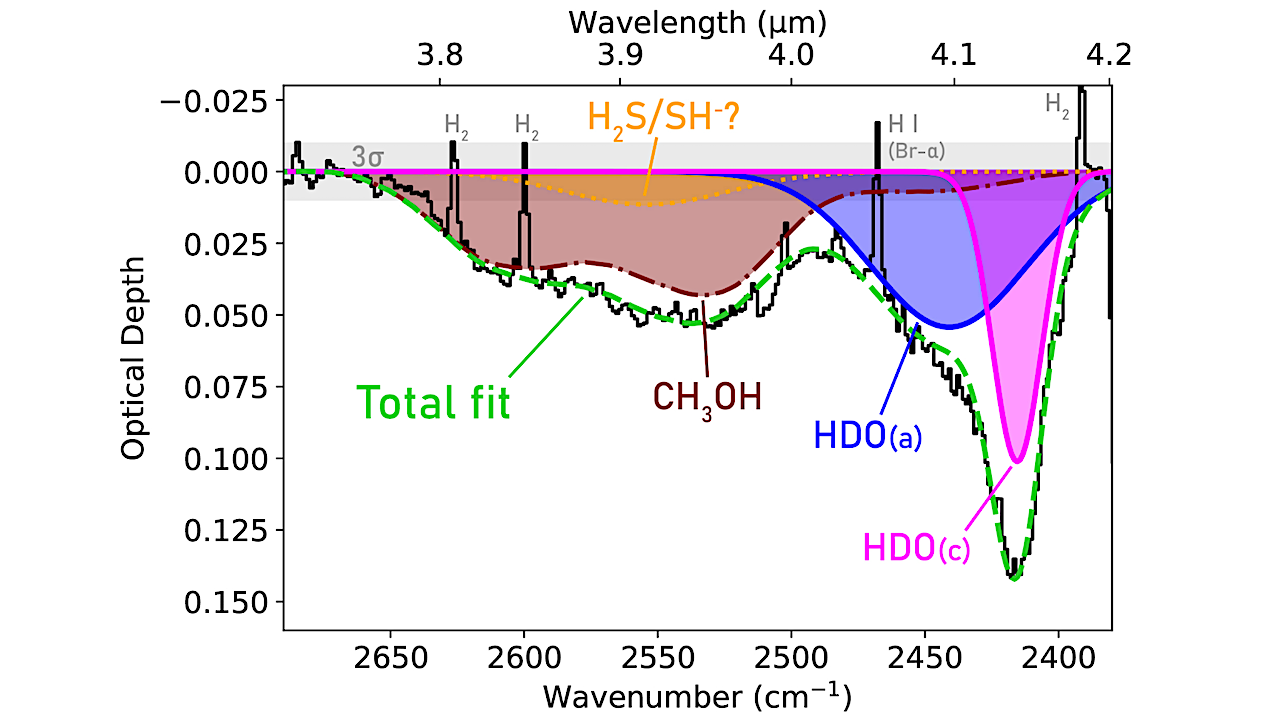
NIRSpec spectrum of L1527 on the optical depth scale from 3.7-4.2 µm (solid black trace) along with the ice fit components CH3OH (dash-dotted brown trace), a Gaussian representing SH-bearing ices (dotted yellow trace), amorphous HDO (solid blue trace), crystalline HDO (solid magenta trace), and the total combined ice fit (dashed green trace). The gray horizontal shaded region indicates the 3σ noise level. See Figure B.1 for the local continuum used to extract this spectrum. astro-ph.SR
Water is detected in environments representing every stage of star and solar system formation, but its chemical evolution throughout these stages remains poorly constrained.
Deuterium ratios offer a means of probing chemical links between water in different cosmic regions because of their sensitivity to physicochemical conditions.
Here, we present the first detection of the 4.1 μm HDO ice feature with JWST toward a low-mass protostar, L1527 IRS, which may eventually grow to a sun-like mass. We measure an ice HDO/H2O ratio of 4.4+3.7−1.7×10−3, where the reported error is dominated by uncertainties in continuum definition and ice band strengths.
This fraction is similar to the gas HDO/H2O ratios measured in the warm (>100 K) inner cores of other low-mass protostellar envelopes and protoplanetary disks found in comparably isolated star-forming regions.
Such a similarity tentatively supports the assumption that water vapor detected in these regions is not significantly altered by gas-phase reactions following ice sublimation. It also supports the hypothesis that pre- and protostellar water ice is largely inherited in a chemically unaltered state by outer protoplanetary disks.
However, the fraction is a factor of ∼4-10 times higher than the gas HDO/H2O ratios measured toward comets and low-mass protostars in clustered star-forming regions. This difference may be due to either gas-phase water reprocessing in protostellar envelopes and protoplanetary disks, or differences between prestellar conditions of isolated dense cores and the clustered star-forming regions that are more analogous to the environment in which our Sun formed.
Katerina Slavicinska, Łukasz Tychoniec, María Gabriela Navarro, Ewine F. van Dishoeck, John J. Tobin, Martijn L. van Gelder, Yuan Chen, A. C. Adwin Boogert, W. Blake Drechsler, Henrik Beuther, Alessio Caratti o Garatti, S. Thomas Megeath, Pamela Klaassen, Leslie W. Looney, Patrick J. Kavanagh, Nashanty G. C. Brunken, Patrick Sheehan, William J. Fischer
Comments: Accepted for publication in ApJL. 10 pages, 4 figures, 1 table (+14 pages, 10 figures, 2 tables in appendix)
Subjects: Solar and Stellar Astrophysics (astro-ph.SR); Astrophysics of Galaxies (astro-ph.GA)
Cite as: arXiv:2505.14686 [astro-ph.SR] (or arXiv:2505.14686v3 [astro-ph.SR] for this version)
https://doi.org/10.48550/arXiv.2505.14686
Focus to learn more
Related DOI:
https://doi.org/10.3847/2041-8213/addb45
Focus to learn more
Submission history
From: Katerina Slavicinska
[v1] Tue, 20 May 2025 17:59:58 UTC (11,976 KB)
[v2] Mon, 26 May 2025 10:38:16 UTC (11,976 KB)
[v3] Tue, 3 Jun 2025 16:07:37 UTC (11,977 KB)
https://arxiv.org/abs/2505.14686
Astrobiology,
Stay Informed With the Latest & Most Important News
Previous Post
Next Post
-
 012024 in Review: Highlights from NASA in Silicon Valley
012024 in Review: Highlights from NASA in Silicon Valley -
 02Panasonic Leica Summilux DG 15mm f/1.7 ASPH review
02Panasonic Leica Summilux DG 15mm f/1.7 ASPH review -
 03From Polymerization-Enabled Folding and Assembly to Chemical Evolution: Key Processes for Emergence of Functional Polymers in the Origin of Life
03From Polymerization-Enabled Folding and Assembly to Chemical Evolution: Key Processes for Emergence of Functional Polymers in the Origin of Life -
 04How New NASA, India Earth Satellite NISAR Will See Earth
04How New NASA, India Earth Satellite NISAR Will See Earth -
 05And Thus Begins A New Year For Life On Earth
05And Thus Begins A New Year For Life On Earth -
 06Astronomy Activation Ambassadors: A New Era
06Astronomy Activation Ambassadors: A New Era -
07SpaceX launch surge helps set new global launch record in 2024












